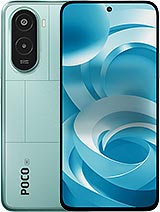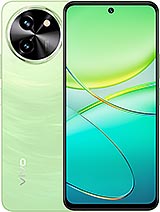Apple iPhone SE (2022) alternatives
Tap above to see alternatives.
Poco M7 Plus alternatives
Tap above to see alternatives.
Apple iPhone SE (2022)

Apple iPhone SE (2022)
-
A15 Bionic
5 nm
-
2018 mAh
20W
-
4.7"
750x1334 pixels
-
12 MP
4K@24/30/60fps
- Specs
Poco M7 Plus

Poco M7 Plus
-
Snapdragon 6s Gen 3
6 nm
-
7000 mAh
33W
-
6.9"
1080 x 2340 pixels
-
50 MP
1080p@30fps
- Specs
2x3.22 GHz Avalanche
4x1.82 GHz Blizzard
2x2.3 GHz Cortex-A78
6x2.0 GHz Cortex-A55
4GB 128GB (NVMe)
4GB 256GB (NVMe)
8GB 128GB (UFS 2.2)
f/1.8 (wide), PDAF, OIS
f/1.8, (wide), PDAF
Auxiliary lens
1080p@30/60/120/240fps
f/2.2
f/2.0, (wide)
SIM1: Nano, SIM2: eSIM
17 5G bands
n1, n2, n3, n5, n7, n8, n20, n25, n28, n38, n40, n41, n66, n71, n77, n78, n79
8 5G bands
n1, n3, n5, n8, n20, n28, n40, n78
In this performance comparison, the Apple iPhone SE (2022) with its Apple A15 Bionic (5nm) performs better than the Poco M7 Plus with the Qualcomm Snapdragon 6s Gen 3 (6nm), thanks to superior chipset efficiency.
Poco M7 Plus launched with Android 15 and will receive updates until Android 17, whereas Apple iPhone SE (2022) launched with iOS 15.4 and will get iOS 15.4. Both phones are expected to receive security updates until around 2029.
Both Apple iPhone SE (2022) and Poco M7 Plus use LCD screens. In terms of smoothness, Poco M7 Plus offers a higher 144 Hz refresh rate, ensuring fluid scrolling and animations. Poco M7 Plus also boasts a brighter screen with 850 nits of peak brightness, enhancing outdoor visibility. Notably, Poco M7 Plus offers a higher screen resolution, resulting in sharper visuals and more detailed content.
Poco M7 Plus features a larger 7000 mAh battery, potentially delivering better battery life. Poco M7 Plus also supports faster wired charging at 33W, compared to 20W on Apple iPhone SE (2022). Apple iPhone SE (2022) supports wireless charging at 7.5W, while Poco M7 Plus does not support wireless charging.
Apple iPhone SE (2022) offers better protection against water and dust with an IP67 rating.
¹ Scores can vary even with the same chipset due to RAM, thermals, and software optimization.










